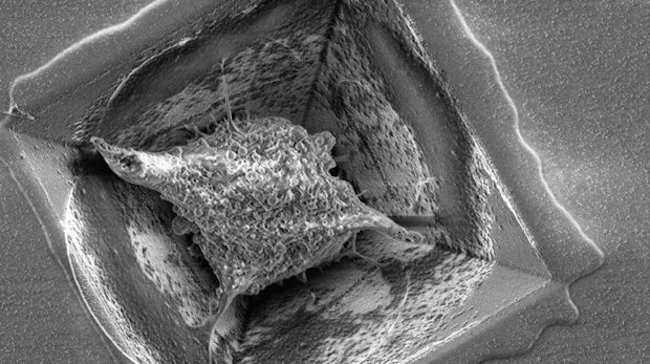
The 3D array, consisting of a sieve-like structure with hundreds of openings shaped like inverted pyramids, has been developed by Bart Schurink, a researcher at the University of Twente’s MESA+ Institute for Nanotechnology.
It will allow researchers to carry out more realistic studies of brain cell operation than the conventional 2D model consisting of a petri dish with flat electrodes, Schurink said.
“If you culture cells on a 2D surface, the cells will become flat, and they will not be in their evolved morphology, or shape, anymore,” said Schurink. “What biologists believe is that cells in the body have a round shape, and to get more representative results, you need to have this round morphology on your electrodes."
The structure, known as a micro sieve electrode array, contains 900 pyramid-shaped openings. Each of these openings is equipped with an electrode to measure electrical signals from the cells or send stimuli to the network.
“This means that you can essentially do single cell recording of each of the neurons, instead of seeding cells at random on a 2D electrode,” said Schurink.
Liquids can also flow through the holes, allowing researchers to pass nutrients or medication to the individual neurons.
Once the neurons are placed inside the pyramids, they begin to form a network. A micro reactor on top of the array allows the network to grow vertically as well as horizontally.
Growth and electrical activity can then be monitored, with each cell identified by the particular pyramid it is located in.
The micro sieve electrode array has already been tested successfully on living cells.




Red Bull makes hydrogen fuel cell play with AVL
Surely EVs are the best solution for motor sports and for weight / performance dispense with the battery altogether by introducing paired conductors...